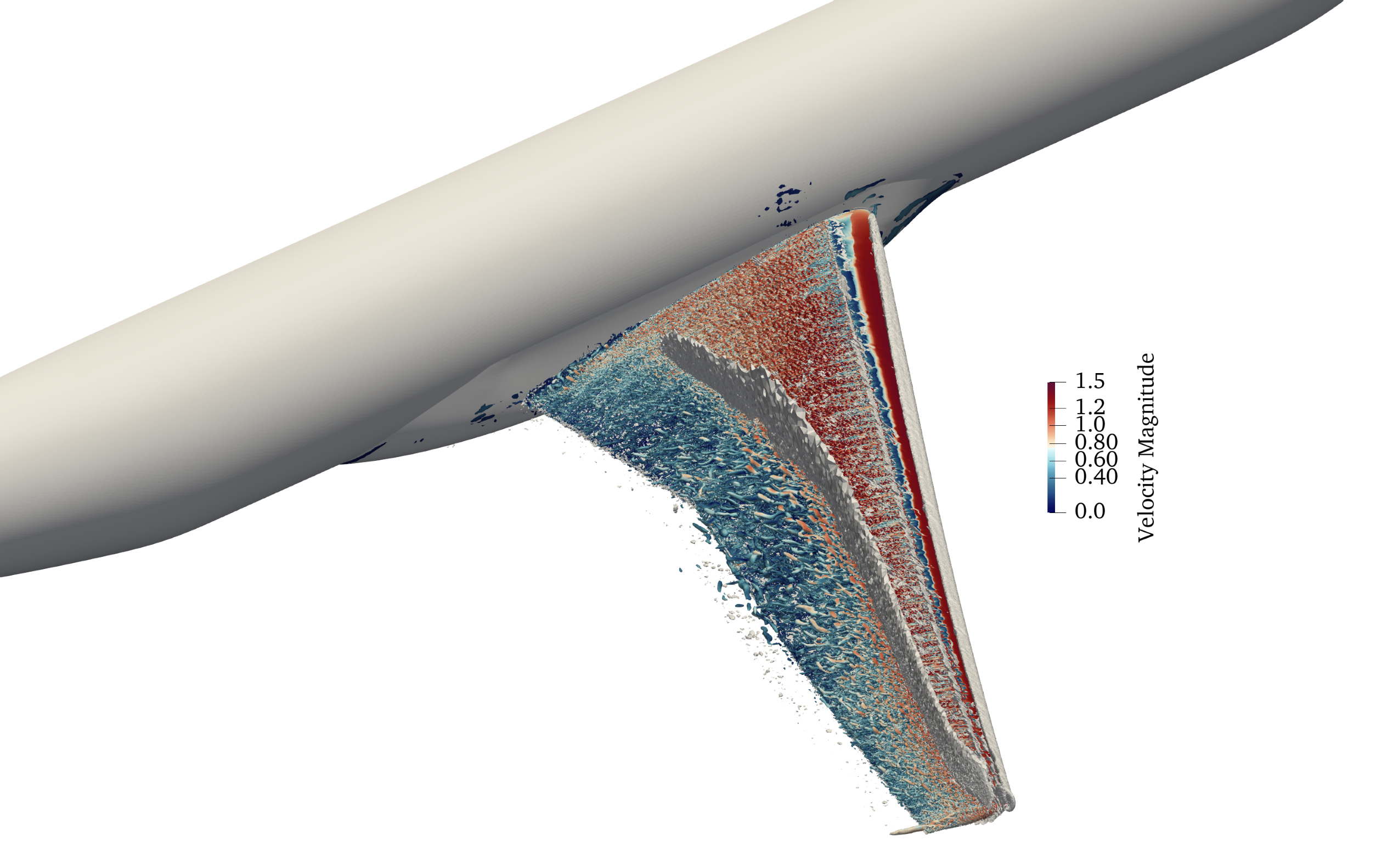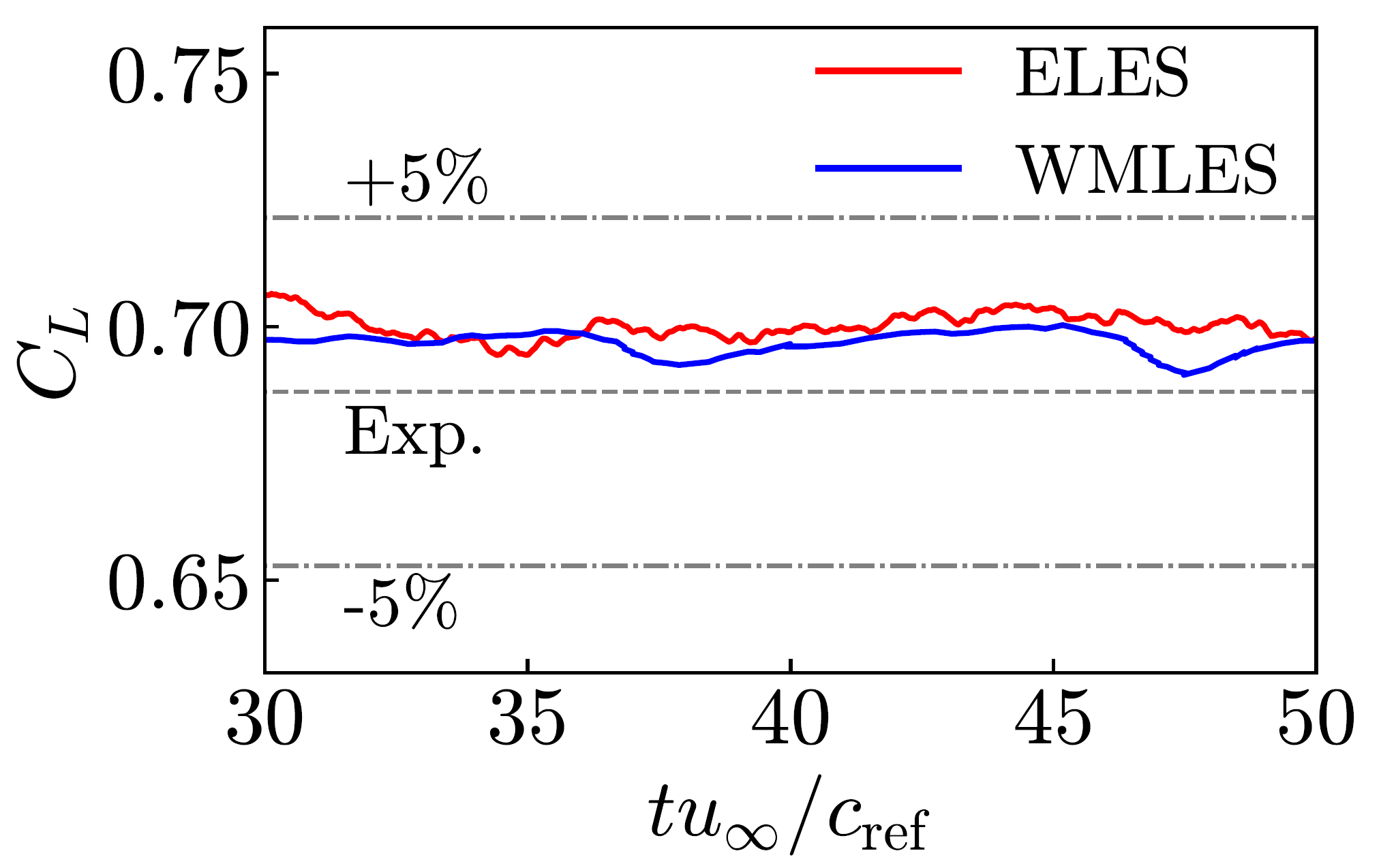Development of improved numerical tools for Certification by Analysis(CbA)
JAXA Supercomputer System Annual Report February 2024-January 2025
Report Number: R24EDA201G22
Subject Category: Aeronautical Technology
- Responsible Representative: Kazuyuki Nakakita, Aviation Technology Department
- Contact Information: Andrea Sansica(sansica.andrea@jaxa.jp)
- Members: David Lusher, Atsushi Hashimoto, Kenji Hayashi, Yuki Ide, Takashi Ishida, Masashi Kanamori, Yuko Maruyama, Tomoaki Matsuzaki, Yoimi Kojima, Yosuke Sugioka, Kosuke Uchida, Takahiro Yamamoto, Andrea Sansica
Abstract
High-accuracy simulations for stall and buffet are needed during the aircraft design. However, since the simulation cost is very high, we want to develop computation methodologies that aim at high-accuracy results with low computational cost. Hybrid RANS/LES methods (Embedded LES, ELES) have been implemented in FaSTAR and validated for different flow configurations.
Reference URL
N/A
Reasons and benefits of using JAXA Supercomputer System
For stall and buffet analysis, it is necessary to perform calculations on 3D complex geometries. Achieving high accuracy requires a large amount of computing power, so it is necessary to use a JAXA supercomputer.
Achievements of the Year
The ELES method developed up to last fiscal year was applied to the NASA CRM configuration under transonic buffet conditions. An examination of the time history of the lift coefficient confirmed that the buffet phenomenon was successfully reproduced. Furthermore, the results obtained using the ELES method were within 5% error compared to experimental data, achieving an accuracy equivalent to that of the high-fidelity WMLES method.
Publications
N/A
Usage of JSS
Computational Information
- Process Parallelization Methods: MPI
- Thread Parallelization Methods: OpenMP
- Number of Processes: 48 - 1537
- Elapsed Time per Case: 168 Hour(s)
JSS3 Resources Used
Fraction of Usage in Total Resources*1(%): 1.76
Details
Please refer to System Configuration of JSS3 for the system configuration and major specifications of JSS3.
| System Name | CPU Resources Used(Core x Hours) | Fraction of Usage*2(%) |
|---|---|---|
| TOKI-SORA | 46760402.13 | 2.14 |
| TOKI-ST | 97234.25 | 0.10 |
| TOKI-GP | 12.26 | 0.00 |
| TOKI-XM | 8250.86 | 4.02 |
| TOKI-LM | 25475.74 | 1.84 |
| TOKI-TST | 0.00 | 0.00 |
| TOKI-TGP | 0.00 | 0.00 |
| TOKI-TLM | 0.00 | 0.00 |
| File System Name | Storage Assigned(GiB) | Fraction of Usage*2(%) |
|---|---|---|
| /home | 2186.63 | 1.47 |
| /data and /data2 | 171660.01 | 0.82 |
| /ssd | 37253.97 | 2.00 |
| Archiver Name | Storage Used(TiB) | Fraction of Usage*2(%) |
|---|---|---|
| J-SPACE | 23.00 | 0.08 |
*1: Fraction of Usage in Total Resources: Weighted average of three resource types (Computing, File System, and Archiver).
*2: Fraction of Usage:Percentage of usage relative to each resource used in one year.
ISV Software Licenses Used
| ISV Software Licenses Used(Hours) | Fraction of Usage*2(%) | |
|---|---|---|
| ISV Software Licenses(Total) | 318.38 | 0.22 |
*2: Fraction of Usage:Percentage of usage relative to each resource used in one year.
JAXA Supercomputer System Annual Report February 2024-January 2025




